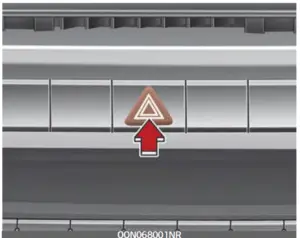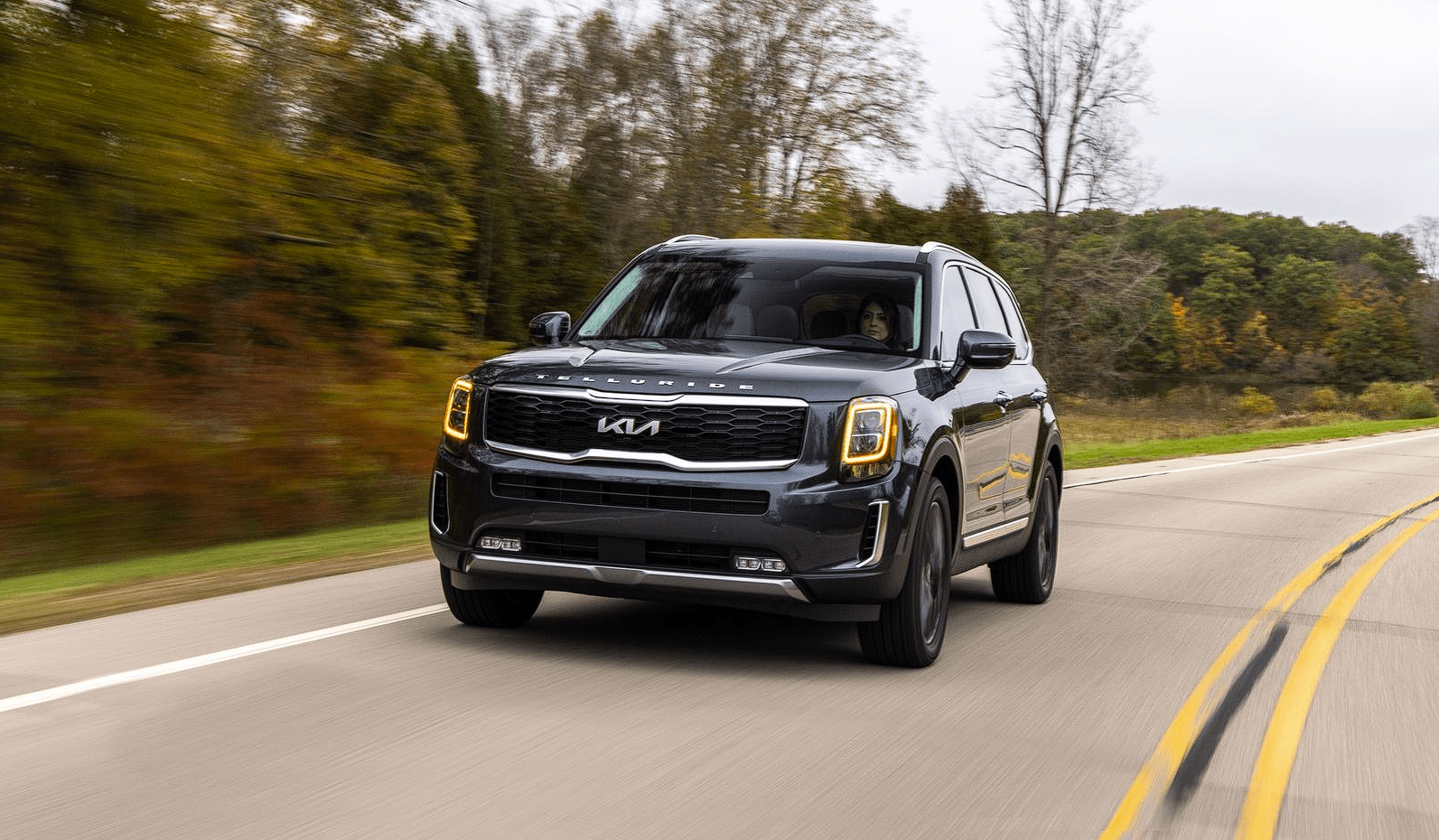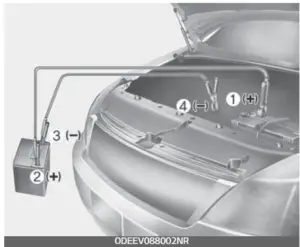2022 Kia Telluride Road Warning And If the Engine Overheats
As Kia’s top-of-the-line SUV, the 2022 Telluride is the right mix of cutting-edge technology and strong engineering to ensure safety and performance on the road. This versatile vehicle has a number of high-tech road warning systems that give drivers the utmost trust and safety on their trips. The Telluride’s road warning systems, which include adaptive cruise control, lane departure warning, and blind-spot tracking, act like careful co-pilots, warning drivers of possible dangers and helping to keep the roads safe. There is a strong 3.8-liter V6 engine inside the Telluride that gives it a great mix of power and efficiency, making it perfect for everything from daily commutes to long-distance trips. This detailed guide goes into great detail about two important parts: the powerful engine and the road warning systems. It shows how the 2022 Kia Telluride changes the way SUVs are driven by putting safety, technology, and performance at the same time.
2023 Kia Telluride Specs, Price, Features and Mileage (Brochure)
Road warning
When in an emergency situation occurs while driving or when you park by the edge of the roadway, you must alert approaching or passing vehicles to be careful as they pass. For this, you should use the hazard warning flasher.
Hazard warning flasher
The hazard warning flasher serves as a warning to other drivers to exercise extreme caution when approaching, overtaking, or passing your vehicle.

It should be used whenever emergency repairs are being made or when the vehicle is stopped near the edge of a roadway.
Depress the flasher switch with the ENGINE START/STOP button in any position. The flasher switch is located in the center fascia panel. All
In case of an emergency while driving
If an emergency situation occurs while driving, stay calm and take the following steps.
If the vehicle stalls while driving
- Reduce your speed gradually, keeping a straight line.
- Move cautiously off the road to a safe place.
- Turn on your hazard warning flasher.
- Try to start the vehicle again. If your vehicle will not start, contact an authorized Kia dealer or seek other qualified assistance.
If the engine stalls at a crossroad or crossing
If the engine stalls at a crossroad or crossing set the shift lever in the N (Neutral) position and then push the vehicle to a safe place.
If your vehicle has a manual transmission not equipped with an ignition lock switch, the vehicle can move forward by shifting to the 2 (second) or 3 (third) gear and then turning the starter without depressing the clutch pedal.
If you have a flat tire while driving
- Take your foot off the accelerator pedal and let the vehicle slow down while driving straight ahead. Do not apply the brakes immediately or attempt to pull off the road as this may cause a loss of control.
- When the vehicle has slowed to such a speed that it is safe to do so, brake carefully and pull off the road.
- Drive off the road as far as possible and park on firm-level ground. If you are on a divided highway, do not park in the median area between the two traffic lanes.
- When the vehicle is stopped, turn on your emergency hazard flashers, set the parking brake and put the transmission in P.
- Have all passengers get out of the vehicle. Be sure they all get out on the side of the vehicle that is away from traffic.
- When changing a flat tire, follow the instructions provided later in this section.
What to do in an emergency
If the engine does not start
When the engine doesn’t start, first check to see how much fuel there is and whether the battery is discharged.
If the engine doesn’t turn over or turns over slowly
- Be sure the shift lever is in N (Neutral) or P (Park) and the emergency brake is set.
- Check the battery connections to be sure they are clean and tight.
- Turn on the interior light. If the light dims or goes out when you operate the starter, the battery is discharged.
- Check the starter connections to be sure they are securely tightened.
Do not push or pull the vehicle to start it. This could cause damage to your vehicle.
WARNING
Push/pull start
Do not push or pull the vehicle to start it. Push or pull starting may cause the catalytic converter to overload and create a fire hazard.
If the engine turns over normally but does not start
- Check the fuel level.
- With the ENGINE START/STOP button in the OFF position, check all connectors at the ignition coils and spark plugs. Reconnect any that may be disconnected or loose.
- Check the fuel line in the engine compartment.
- If the engine still does not start, call an authorized Kia dealer or seek other qualified assistance.
2023 Kia Telluride Specs, Price, Features and Mileage (Brochure)
Emergency starting
When the vehicle will not start because of low battery power, you may need to jump-start the vehicle.
Jump-starting
Connect cables in numerical order and disconnect in reverse order.
Jump-starting can be dangerous if done incorrectly. Therefore, to avoid harm to yourself or damage to your vehicle or battery, follow these jump-starting procedures. If in doubt, we strongly recommend that you have a competent technician or towing service jump-start your vehicle.
WARNING
Battery
Never attempt to check the electrolyte level of the battery as this may cause the battery to rupture or explode.
WARNING
Frozen batteries
Do not attempt to jump-start the vehicle if the discharged battery is frozen as the battery may rupture or explode.
WARNING
Battery
Keep all flames or sparks away from the battery. The battery produces hydrogen gas which will explode if exposed to flame or sparks.
WARNING
Battery cables
Do not connect the jumper cable from the negative terminal of the booster battery to the negative terminal of the discharged battery, directly. This can cause the discharged battery to overheat and crack, degradation.
Make sure to connect one end of the jumper cable to the negative terminal of the booster battery, and the other end to a metallic point, far away from the battery.
WARNING
Sulfuric acid risk
Automobile batteries contain sulfuric acid. When jump-starting your vehicle, be careful not to get sulfuric acid on yourself, your clothing, or on the vehicle. This acid is poisonous and highly corrosive.
Jump-starting
- Make sure the booster battery is 12-volt and that its negative terminal is grounded.
If the booster battery is in another vehicle, do not allow the vehicles to come in contact. - Turn off all unnecessary electrical loads.
- Connect the jumper cables in the exact sequence shown in the illustration.
- Connect on end of a jumper cable to the positive terminal of the discharged battery (1).
- Connect the other end to the positive terminal of the booster battery (2).
- Proceed to connect one end of the other jumper cable to the negative terminal of the booster battery (3), then the other end to a solid, stationary, metallic point away from the battery (4).
Do not allow the jumper cables to contact anything except the correct battery terminals or the correct ground. Do not lean over the battery when making connections.
- Start the vehicle with the booster battery and let it run at 2,000 rpm, then start the vehicle with the discharged battery.
If the cause of your battery discharging is not apparent, you should have your vehicle checked by an authorized Kia dealer.
NOTICE
Make sure to connect one end of the jumper cable to the negative terminal of the booster battery, and the other end to a metallic point, far away from the battery.
Push-starting
Vehicles equipped with automatic transmissions cannot be push-started, and only jump-starting can be applied. Follow the directions in this page for jump-starting.
WARNING
Tow starting vehicle
Never tow a vehicle to start it. When the engine starts, the vehicle can suddenly surge forward and could cause a collision with the tow vehicle.
If the engine overheats
If your temperature gauge indicates overheating, you experience a loss of power, or hear loud pinging or knocking, the engine will probably be too hot.
If this happens, you should:
- Pull off the road and stop as soon as it is safe to do so.
- Place the shift lever in P and set the parking brake.
- If the air conditioning is on, turn it off.
- If engine coolant is running out under the vehicle or steam is coming out from underneath the hood, stop the engine. Do not open the hood until the coolant has stopped running or the steaming has stopped.
- If there is no visible loss of engine coolant and no steam, leave the engine running and check to be sure the engine cooling fan is operating.
- If the fan is not running, turn the engine off.
- Check to see if the water pump drive belt is missing.
- If it is not missing, check to see that it is tight.
- If the drive belt seems to be satisfactory, check for coolant leaking from the radiator, hoses or under the vehicle. (If the air conditioning had been in use, it is normal for cold water to be draining from it when you stop).
WARNING
Under the hood
While the engine is running, keep hair, hands and clothing away from moving parts such as the fan and drive belts to prevent injury.
- If the water pump drive belt is broken or engine coolant is leaking out, stop the engine immediately and call the nearest authorized Kia dealer for assistance.
- If you cannot find the cause of the overheating, wait until the engine temperature has returned to normal. If the coolant has been lost, carefully add coolant to the reservoir to bring the fluid level in the reservoir up to the halfway mark.
- Proceed with caution, keeping alert for further signs of overheating. If overheating happens again, call an authorized Kia dealer for assistance.
WARNING
Radiator cap
Do not remove the radiator cap when the engine is hot. This may result in coolant being blown out of the opening and cause serious burns.
Serious loss of coolant indicates there is a leak in the cooling system and this should be checked as soon as possible by an authorized Kia dealer.
FAQ’s
A: The 2022 Kia Telluride may be equipped with various road warning systems, including lane departure warning, blind-spot monitoring, and forward collision warning.
A: Lane departure warning uses cameras to monitor lane markings and alerts the driver if the vehicle drifts out of its lane without a turn signal.
A: Yes, many versions of the 2022 Telluride include lane-keeping assist, which can automatically steer the vehicle back into its lane if it detects unintended lane departure.
A: Blind-spot monitoring is a system that alerts the driver if there is a vehicle in their blind spot. The Telluride often comes equipped with this feature.
A: Yes, some trim levels of the Telluride offer adaptive cruise control, which can adjust the vehicle’s speed to maintain a safe following distance from the car ahead.
A: In the event of a sudden loss of power, safely pull over to the side of the road, turn on hazard lights, and contact Kia Roadside Assistance or seek professional assistance.
A: If you experience a tire blowout, maintain a firm grip on the steering wheel, gradually reduce speed, and steer to a safe location while avoiding sudden maneuvers. Once stopped, change the flat tire or call for assistance.
A: In the rare event of brake failure, pump the brake pedal rapidly, downshift to a lower gear if possible, and use the parking brake to gradually slow the vehicle down. Seek professional help immediately.
A: If the engine fails to start, ensure the vehicle is in park or neutral, check the battery connections for corrosion or loose cables, and try jump-starting the battery with jumper cables or call for assistance.
A: In emergency situations, you can use a booster battery or another vehicle to jump-start the Telluride. Follow the recommended procedures outlined in the owner’s manual.
A: The emergency starting procedures are typically used when the battery is weak or drained. If the engine is completely dead or there’s a mechanical issue, it’s best to contact a professional mechanic or Kia Roadside Assistance.
A: If the engine overheats, pull over to a safe location, turn off the engine, and allow it to cool down. Check the coolant level, but only add coolant after the engine has cooled to avoid burns.
A: No, it’s not safe to open the hood immediately after the engine overheats. Wait until it has cooled down before attempting to check or add coolant.
A: It is not advisable to continue driving if the engine is overheating, as it can lead to serious engine damage. Allow the engine to cool and address the cause of overheating before resuming your journey.
A: Engine overheating can be caused by factors such as low coolant levels, a malfunctioning thermostat, a cooling system leak, or a faulty radiator fan. It’s important to diagnose and address the specific issue to prevent future overheating incidents.
Useful Link
View Full User Guide: Kia Telluride 2022 User Guide
Download Manuals: https://owners.kia.com/content/owners/en/manuals.html
2023 Kia Telluride Specs, Price, Features and Mileage (Brochure)



